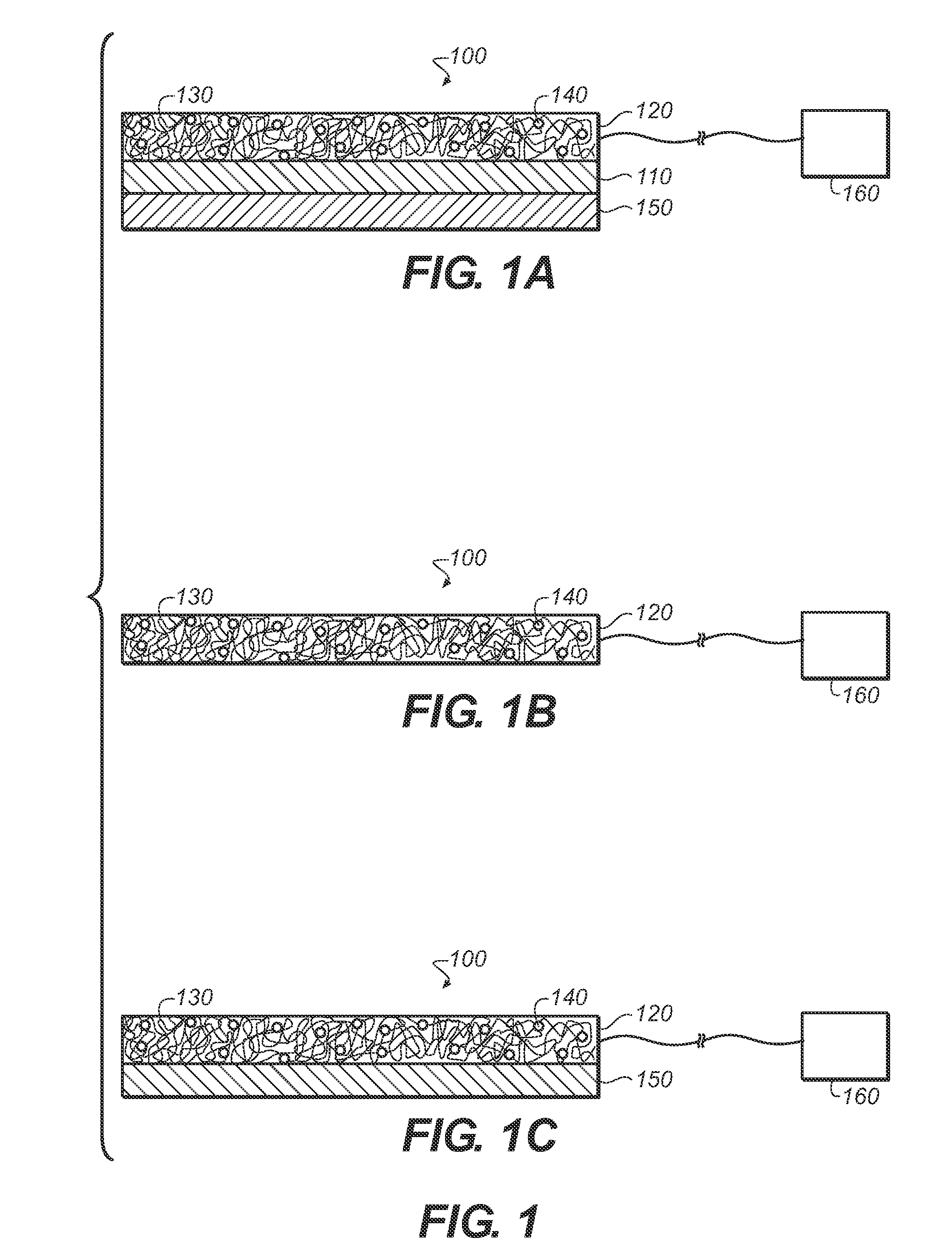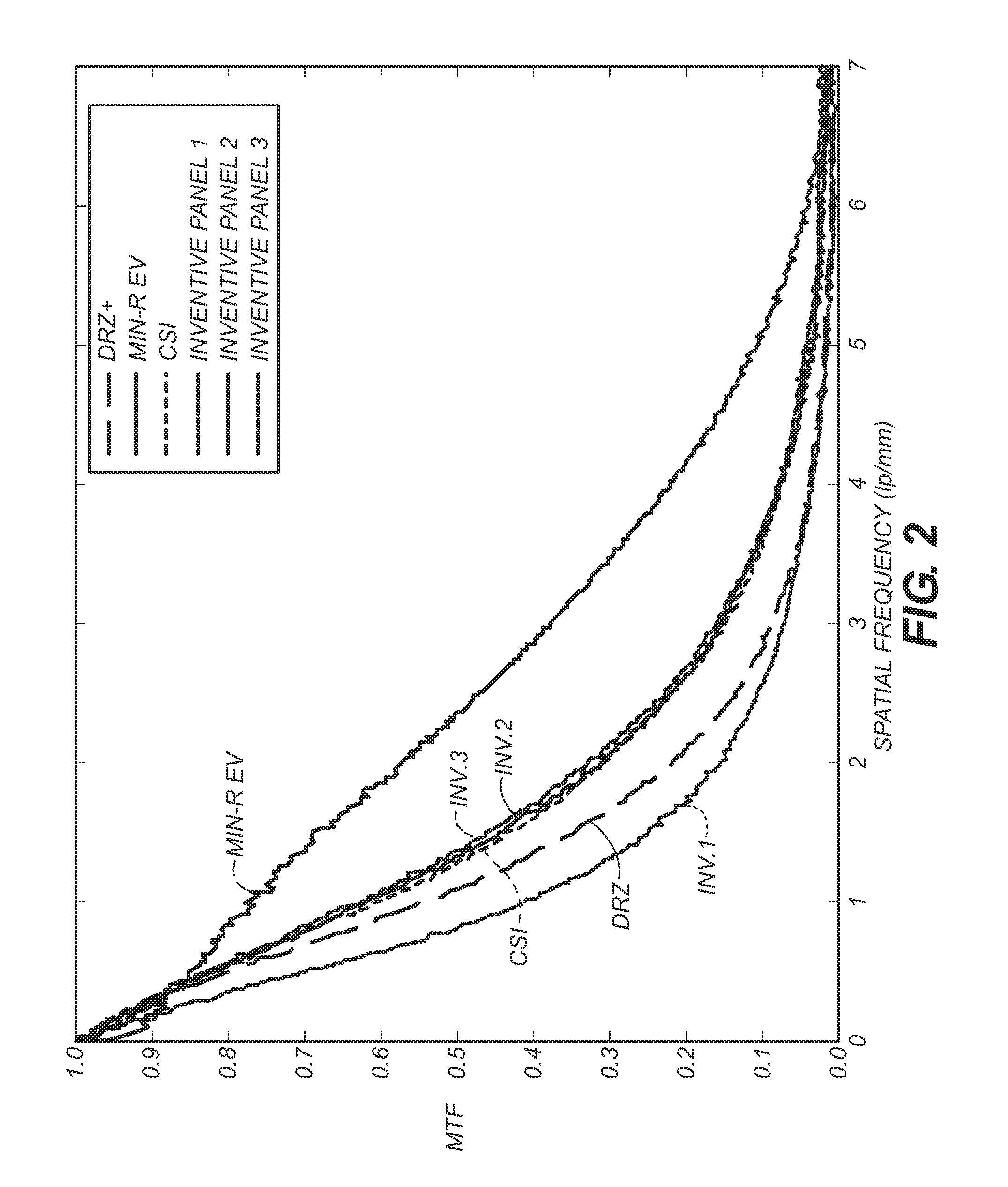Radiation sensing thermoplastic composite panels
a thermoplastic composite panel and radiation sensing technology, applied in the field of scintillation materials, can solve the problems of reducing image resolution, reducing conversion efficiency, and reducing image resolution
- Summary
- Abstract
- Description
- Claims
- Application Information
AI Technical Summary
Benefits of technology
Problems solved by technology
Method used
Image
Examples
examples
Composite Thermoplastic Particle Production
[0035]Composite thermoplastic particles according to the present disclosure were prepared comprising 80 wt. % gadolinium oxysulfide (Gd2O2S) (“GOS”) and 20 wt. % low density polyethylene (LDPE 811A, available from Westlake Chemical Corp. of Houston, Tex.). The GOS powder was loaded into Feeder 2 and the LDPE was loaded into Feeder 4 of a Leistritz twin screw compounder. The die temperature was set to 200° C. and 10 heating zones within the compounder were set to the temperatures shown in Table 1 below:
TABLE 1Zone12345678910Temp (° C.)180190200200190190190190175170
[0036]The screw speed was 300 RPM, and the GOS powder and LDPE were gravity fed into the screw compounder. After exiting the die, the composite thermoplastic particles, comprising LDPE loaded with Gd2O2S, entered a 25° C. water bath to cool and hardened into continuous strands. The strands were then pelletized in a pelletizer and dried at 40° C.
Co-Extrusion of Scintillator Layer an...
PUM
| Property | Measurement | Unit |
|---|---|---|
| thickness | aaaaa | aaaaa |
| temperature | aaaaa | aaaaa |
| temperature | aaaaa | aaaaa |
Abstract
Description
Claims
Application Information
 Login to View More
Login to View More - R&D
- Intellectual Property
- Life Sciences
- Materials
- Tech Scout
- Unparalleled Data Quality
- Higher Quality Content
- 60% Fewer Hallucinations
Browse by: Latest US Patents, China's latest patents, Technical Efficacy Thesaurus, Application Domain, Technology Topic, Popular Technical Reports.
© 2025 PatSnap. All rights reserved.Legal|Privacy policy|Modern Slavery Act Transparency Statement|Sitemap|About US| Contact US: help@patsnap.com



